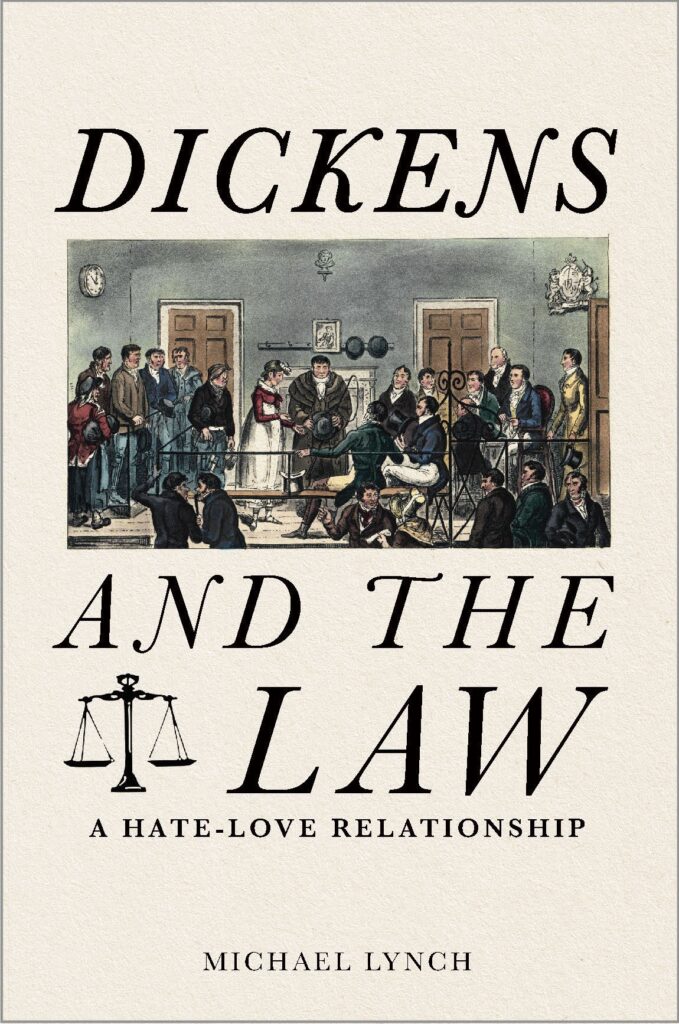Charles Dickens is arguably the most legendary member of The Honourable Society of the Middle Temple never to be Called to the Bar. Admitted to the Inn in 1839, the author withdrew his membership in 1855, as he was no longer motivated to continue his legal studies due to the flourishing of his writing career. Dickens’ awareness and curiosity about the law never waned; his writings serve as a critique of the social inequalities of the time and of the law itself.

Michael Lynch’s new book Dickens and the Law guides the reader through the characters and storylines of a dozen of Dickens’ greatest novels. This well-researched work provides the historical, legislative, and judicial backdrop that unfolded during Dickens’ time. Changes to the Poor Law to reduce poor relief costs and the cases of Jones v Shaw and Ockerby v Shaw in 1823, which heard abuses by a schoolmaster towards pupils, are picked up by Dickens in his writings. Lynch also carefully weaves through the biographical details of Dickens’ life and the imaginative worlds he constructed – worlds inspired by the Inns of Court as a place and the personalities of the barristers who inhabit them.
Lynch summarises:
Dickens does not wish to write, and his readers do not wish to read, a book of social criticism or legal theory but his literary creativity is driven as much by moral concern as much as it is by the fertility of his imagination and his narrative is frequently shaped by or reflective of social and legal institutions.
The book presents an opportunity to revisit Dickens’ impression of those working in the legal field and the institutions that serve the law. This impression is considered unfavourable at times. The reader discovers Dickens’ satirical portrayal of the feckless, dismissive advocates, from those in The Pickwick Papers to the corrupt attorney Sampson Brass in The Old Curiosity Shop. The novels reflect Dickens’ disappointment with a judicial system, which he felt was irrational and ineffectual at times. This is most evident in his work, Bleak House, which criticises the Court of Chancery, known for its excessive delays. Dickens’ painful experience of working in the boot-blacking warehouse, Warren’s Blacking Factory, at age 12, and the anguish of his father being sent to debtors’ prison, manifests itself in Oliver Twist and Nicholas Nickleby.
The fountain outside Middle Temple Hall, Temple Stairs, and Temple Bar are all locations featured in Dickens’ works. In the semi-autobiographical David Copperfield, the reader meets Tommy Traddles, who is supposedly based on fellow Middle Templar Sir Thomas Noon Talfourd (1795-1854), an English judge and Member of Parliament who pushed for more legislation regarding copyright. Traddles is one of the few barristers to receive an honourable depiction in Dickens’ work.
Lynch has carefully organised and thoughtfully crafted a book which chronicles Dickens’ life through his fictional stories. The analysis is peppered with excerpts of Dickens’ writings, and it is this combination which adds new dimension and depth to well-known characters and places.

Beth Flerlage is an assistant librarian. She is responsible for the development of the UK and Official Publications collections. She also contributes to the teaching program provided by the organisation to support members of the Bar.

